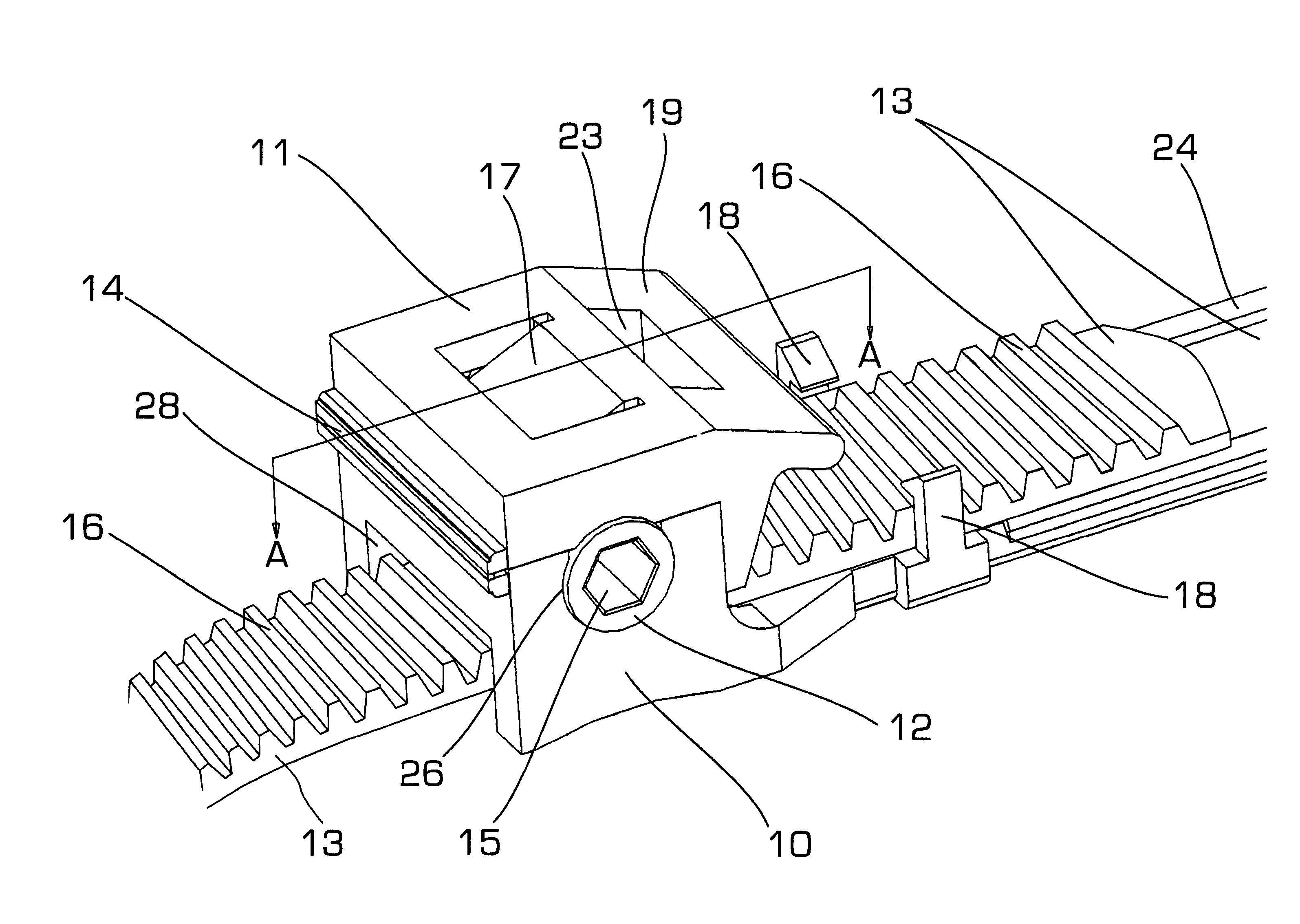None of which have completely satisfied the use advantages but have unfortunately incorporated many disadvantages in there overall design.
Some of the problems have been addressed but not adequately and never completely in one clamp.
A frequent problem is hose clamps and hoses are positioned in confined spaces or visually out of
sight so that only one hand may be used when, tightening or loosening a clamp.
Unfortunately tight areas and hard to reach places are common when using hoses and fittings.
Kreft has positioned a tightening
wrench opposed to the axial of the hose, however it appears that the hexagonal
wrench can only be inserted on one side of the head limiting its practical use in hard to reach spaces.
Also, the patent does not describe in detail the means of attachment of the locking and gear section to the band or strap, which is critical to its function and cost of manufacture.
The strength of the teeth is also a factor due to their nominal width as well as the depth of engagement in the slots in the strap are also questionable.
Difficulty appears when the engaging member tab, holding the gear in a stop position where as the hexagonal wrench must be withdrawn so the gear will slide into position by means of a spring.
If the hexagonal wrench is removed, force cannot be maintained against the spring causing
counter rotation of the gear releasing the strap.
Small
thin metal tabs are all that prevents the clamp from disengaging as well as a fine steel spring to engage the stop incidence of
corrosion are common and will certainly cause this clamp to fail.
All of which have exposed mechanisms that can become entangled with adjacent apparatus or
cause injury by having exposed sharp edges.
It also appears some difficulty would be encountered releasing the ratchets when under reverse force from the tightened strap.
Kitts U.S. Pat. No. 2,383,199 (1945) as mentioned above this device may also be accidentally released by the exposed position of the
ratchet paw.
Another major flaw in all the above clamps is that the parts are all various types of
metal costly to fabricate, manufacture and assemble.
In a relatively short time, under certain conditions, all
metal even high quality will corrode, fatigue and erode, especially made from
thin sheet metal with no substantial thickness.
It has been demonstrated that “worm gear” design when over tightened will fracture or bend the metal between each perforation of the strap since they are close together with little metal support between each perforation.
Little surface contact between the “worm gear” and the perforations also causes failure.
Although it appears that in order to release the gear from the slotted strap it would have to be pried up with a tool not easily accomplished in tight surroundings or areas out of
sight.
In addition all the clamps cited above are fabricated from metal, costly to fabricate, manufacture and assemble.
Although it has no means to disengage and is designed to be finger tightened only limiting its use.
All hose clamps of this type as described above in various forms suffer from a number of disadvantages:(a) Hose clamps based on the “worm gear” design principle cannot be applied or removed using only one hand.
A distinct
disadvantage in many applications.(b) All prior art hose clamps designed for
medium pressure applications are fabricated from metal.
Under certain
adverse conditions such as
exposure to acids, salts,
electrolysis, flexing, vibrations and the like may degrade these clamps to the point of failure, even high quality stainless steel.(c) The majority of hose clamps used today do not embody means to rapidly and easily disengage.(d) The need to use tools to install or remove hose clamps such as slotted screwdrivers or ratchets in places inaccessible or completely out of view is cumbersome a distinct
disadvantage.(e) Another
disadvantage is the inability to
color code in order to identify the contents being carried within a hose and could be a safety issue.(f) To
assembly metal hose clamps you must consider the cost of material, overall energy necessary to manufacture and form parts, labor and
assembly equipment, manufacturing space, shipping, as well as other
peripheral expenses.
These costs are exceedingly greater than a polymeric composite, injection molded,
hose clamp.(g) Some hazards of using
metal hose clamps are injuries and cuts from sharp edges and accidental electrical
conductivity.
 Login to View More
Login to View More  Login to View More
Login to View More 


